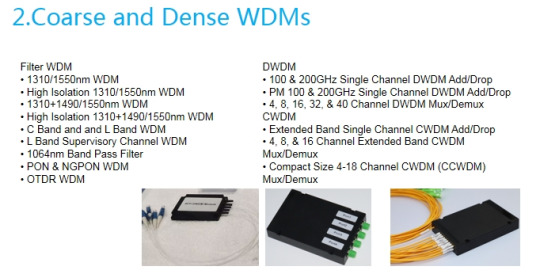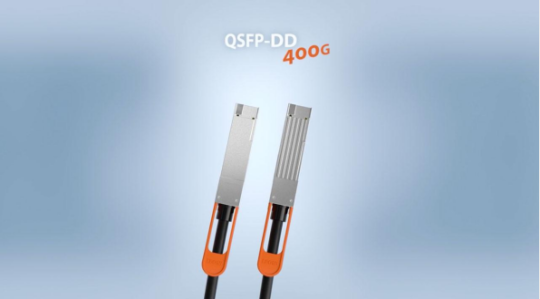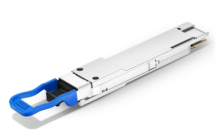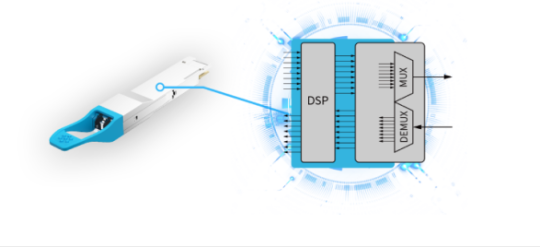#cwdm
Explore tagged Tumblr posts
Text
throwback to uh. this

0 notes
Text

Fiber-Life CWDM vs DWDM,Key Differences You Need to Know.Understanding the key differences between CWDM and DWDM will,help you make smarter choices when designing.
0 notes
Text

Our company has its own array of manufacturing units and testing labs for no interference with probable third parties.
The product inspection is completely taken care of by in-house professionals and experienced quality experts. The Lightstar Technology is provides all kinds of passive components too like WDMs, PLC Splitter, FBT Coupler, Fiber Optic Attenuator, Fiber Optic Isolator, Fiber Optic Circulator, PM Components, High Power Components, and others.
Searching for a supplier of Passive Components at an affordable price range? The Lightstar Technology is a reliable supplier of different electronic components including WDMs and fiber optic cable parts at a better price.
1 note
·
View note
Text
Exploring the Backbone of Connectivity: The Fiber Optic Patch Cord

In the realm of modern telecommunications, where speed, reliability, and efficiency are paramount, the humble fiber optic patch cord plays a crucial role. Serving as the lifeline of data transmission networks, these slender strands of glass or plastic fiber enable the seamless exchange of information over vast distances at lightning speeds.
At its core, a fiber optic patch cord is a flexible, lightweight cable terminated with connectors on both ends, typically made from ceramic, metal, or plastic. These connectors, often using standardized interfaces like LC, SC, or ST, facilitate the connection between various network devices, such as switches, routers, and servers.
One of the most compelling features of fiber optic patch cords is their ability to transmit data using light signals. Unlike traditional copper cables that rely on electrical signals, fiber optics leverage the principles of total internal reflection to guide light pulses through the core of the fiber with minimal loss. This enables them to achieve significantly higher data transfer rates over longer distances, making them indispensable for high-bandwidth applications such as internet backbone infrastructure, data centers, and telecommunications networks.
Moreover, fiber optic patch cords offer inherent immunity to electromagnetic interference (EMI) and radio frequency interference (RFI), ensuring stable and secure data transmission even in environments prone to electrical noise. Additionally, their small form factor and flexibility make them ideal for installations in tight spaces or areas with complex routing requirements.
In essence, fiber optic patch cords serve as the backbone of modern connectivity, enabling the seamless flow of data that underpins our increasingly interconnected world. As technology continues to advance, these unassuming yet essential components will undoubtedly remain at the forefront of innovation, driving the evolution of global communication networks.
#Fiber Optic Patch Cord#Fiber Optic Pigtail#Fiber Optic Adapter#Fiber Optic Cable#Copper/Fiber Composite Cable#FWDM#CWDM#DWDM#Fused WDM
0 notes
Text
#omnitron#cwdm#dual band#splitter#1271nm#1451nm#1471 nm 1611nm#uper band#lower band#mux#demux#univold#trump#putin#tesla
0 notes
Text
Optimize Network Performance with CWDM Mux/Demux
CWDM Mux/Demux enables efficient wavelength multiplexing and demultiplexing, expanding fiber capacity and optimizing data transmission. Perfect for telecommunications and data centers, it ensures seamless scalability and cost-effective network solutions. Contact DK Photonics who is a leadig company of these products.
To know more:
0 notes
Video
youtube
Small size 8CH CWDM Mux Module #cwdm #dwdm #wdm #
#youtube#Small 8CH CWDM Mux: less capacity but enhances fiber network capacity low loss high isolation ideal for space-constrained environments.
0 notes
Text
first sentence patterns
Rules: list the first line of your last 10 fics and see if there's a pattern!
Thank you to @jtimu and @mallstars for the tags. Alas, I cannot give you 10, but I will give you 3 posted + 3 bonus wips:
Patterns? I think regardless of perspective my lifelong obsession with Draco Malfoy is fairly evident... Oh well!
Every Second | drarry | <1k
Harry was going to go for it. Fuck propriety, and fuck the idea that Malfoy would likely hex his balls into separate hemispheres.
You're such a cad, Potter | drarry | ~3k
Draco looked out over the Great Hall of Hogwarts School of Witchcraft and Wizardry with both envy and astonishment.
A Personal Growth Thing | drarry | ~8k
“Right!” Her hands come together on the word like powder puffs; soft clouds of lightly perfumed magic diffuse into the air between them. Draco inhales.
Hesitation | wolfstar | WIP (this is yours @wolfstargazer <3)
Remus held the little brass ball in his palm. He knew now what it was, what it did, yet still he hesitated.
The Haunting of Draco Malfoy | drarry | WIP
Draco’s conscience was made of stars. It shone alongside him as he slept and touched icy fingers to his inflamed mind. It scowled up at the ceiling, ink-patterned hands flexing like they wanted to throttle him.
{The one where Harry is Draco's secretary and yes I absolutely intend to abuse this trope for all it's worth} | drarry with a side of CWDM | WIP
"Yours or mine," Bill asked, proffering a tupperware of lemon biscuits between two doors: hardwood with mottled glass and gold lettering, Bill’s name on one, Draco’s on the other.
I'm gonna tag @wolfstargazer, @soliblomst, and @feelingphan <3 (no pressure obv)
16 notes
·
View notes
Text
Closer Look at 400G QSFP-DD Optical Transceiver Module
Recent years have seen the evolution towards the 5G, Internet of Things (IoT), and cloud computing, increasing pressure on data centers to ramp up both network capacity to 400G and driving providers to search for new solutions to achieve their 400G Data Center Interconnects (DCIs). 400G QSFP-DD optical transceiver module is becoming one of the most popular cutting-edge 400G DCI solutions. This article will provide a basic understanding of QSFP-DD optical transceiver modules.

What is the QSFP-DD Optical Transceiver Module?
Quad small form-factor pluggable-double density (QSFP-DD) is designed with eight lanes that operate at up to 25 Gbps via NRZ modulation or 50 Gbps via PAM4 modulation. It supports data rates of 200 Gbps or 400 Gbps and doubles the density. QSFP-DD is backward compatible with current 40G and 100G QSFPs. It is compliant with IEEE802.3bs and QSFP-DD MSA standards. QSFP-DD is available in single-mode (SM) and multi-mode (MM) fiber optic cables and includes digital diagnostics monitoring (DDM) to monitor parameters such as power, temperature, and voltage.

Types of 400G QSFP-DD Optical Transceiver Module
400G SR8 QSFP-DD
400G SR8 QSFP-DD optical transceiver module is suitable for short-distance interconnection or multi-channel data communication. The transmission rate is up to 425Gbps, and the central wavelength is 850nm. The transmission distance is up to 70m or 100m through multi-mode OM3 and OM4 fiber.
400G DR4 QSFP-DD
400G DR4 QSFP-DD optical transceiver module achieves the transmission over single-mode fiber (SMF) with an MPO-12 connector. It supports a max transmission distance of 500m on SMF.
400G FR4 QSFP-DD
400G FR4 QSFP-DD optical transceiver module supports link lengths of up to 2km SMF with a duplex LC connector. It uses wavelength division multiplexing(CWDM ) technology, eight channels of 53Gbps PAM4 signals on the electrical side, and four channels of 106Gbps PAM4 signals on the optical side, which is twice the rate of the electrical side.
400G LR4 QSFP-DD
400G LR4 QSFP-DD optical transceiver module is designed with a built-in Gearbox chip that multiplexes the two channels' electrical input data into a single-channel outputs signal and then modulates it to the optical receiver end. The digital signal processor (DSP) basis gearbox converts eight channels of 25GBaud PAM4 signals into four channels of 50GBaud (PAM4) over an SMF cable with duplex LC connectors. It supports a transmission distance of up to 10km.
400G LR8 QSFP-DD
The 400GBASE-LR8 optical transceiver module supports link lengths of up to 10km over a standard pair of G.652 SMF with duplex LC connectors.
400G ER8 QSFP-DD
The 400G ER8 QSFP-DD optical transceiver module supports link lengths of up to 40km over a standard pair of G.652 SMF with duplex LC connectors.
400G ER4 QSFP-DD
400G ER4 QSFP-DD optical transceiver module supports link lengths of up to 40km over a standard pair of G.652 SMF with duplex LC connectors. It has only four wavelengths for 4 LAN WDM channels 1295.56/1300.05/1304.58/1309.14nm.
Advantages of 400G QSFP-DD Optical Transceiver Module
Backward compatibility: Allowing the QSFP-DD to support existing QSFP modules (QSFP+, QSFP28, QSFP56, etc.). It provides flexibility for end-users and system designers.
Adopting the 2x1 stacked integrated cage/connector to support the one-high cage connector and two-high stack cage connector system.
SMT connector and 1xN cage design: Enable thermal support of at least 12W per module. The higher thermal reduces the requirement for heat dissipation capabilities of transceivers, thus reducing some unnecessary costs.
ASIC design: Supporting multiple interface rates and fully backward compatible with QSFP+ and QSFP28 modules, thus reducing port and equipment deployment costs.
Applications
400G QSFP-DD optical transceiver module is used in 400G Ethernet, data centers, telecommunications networks, cloud networks, Infiniband interconnects, high-performance computing networks, 5G, 4K video, IoT, etc.

Conclusion
400G QSFP-DD optical transceiver module offers high speed, performance, scalability, and low power in 400G Ethernet. Sun Telecom specializes in providing one-stop total fiber optic solutions for all fiber optic application industries worldwide. Contact us if any needs.
2 notes
·
View notes
Text
Оптические трансиверы (модули) X2
Оптические трансиверы (модули) X2
Оптические модули типа X2 это приемо-передатчики, поддерживающие скорость передачи до 10 Gbit/s (10Гбит/с). Формат X2 далеко не новый форм-фактор 10G приемопередатчиков, и на данный момент он уже не является популярным как раньше, поскольку новое оборудование производят с более дешевыми и компактными 10G портами: SFP+ или XFP. Однако эти модули можно использовать с не новым оборудованием, использующим 10GEthernet(10GE), STM-64/OC-192, Fibre Channel и другие типы передачи данных.
Купить Оптический трансивер (модуль) DWDM X2, дальность 40 км и 80 км Оптический трансивер (модуль) X2 10G, TX 1550 нм, SC, 40 км и 80 км Оптический трансивер (модуль) X2 CWDM, дальность 10 км, 40 км и 80 км Оптический трансивер (модуль) X2 10G, 300 м, TX 850 нм, SC Оптический трансивер (модуль) X2 10G, 10 км, TX 1310 нм, SC
0 notes
Text

Fiber-Life CWDM vs DWDM, Understanding the Differences. CWDM and DWDM boost fiber network bandwidth by combining, optical signals of varying wavelengths on a single fiber strand.
0 notes
Text
PL10-3A RFoG ONU

PL10-3A RFoG ONU SDU follows SCTE 174 2010 standard .(Radio Frequency over Glass Fiber-to-the-Home). PL10-3A has different frequency split option, such as 42/54MHz, 65/86/MHz, 85/105MHz. And, PL10-3A has 1002MHz working bandwidth, also 1218MHZ for DOCSIS 3.1 application. PL10-3A is the ideal platform for use in FTTH and FTTB networks. It delivers upstream and downstream DOCSIS, voice, video and high speed data service over FTTX applications. Forward Path Parameter Unit Value Condition Optical Wavelength nm 1540~1560 CWDM available PON Pass Wavelength nm 1280~1500 PON Pass Port Loss dB 1 PON Optical Isolation dB > 30 Monitor Voltage V/mW 1 λ=1550nm Optical Input Power dBm -6~+2 AGC Range *Frequency Range MHz 54~1002/1218 *42/54,65/86,85/105MHz available Flatness dB ±0.75 *Slope dB 5±1 3±1 available Output Return Loss dB ≥16 Optical Output Return Loss dB >45 *Output Level dBmV 18±2 36±2 1.(Pin=-1dBm,4% OMI/ch, 79ch NTSC,Digital ch above 550MHz at -6dB offset)2.(Pin=-1dBm,4% OMI/ch, 42ch CENELEC) dBuV 77±2 96±2 *C/N dB 51 *CTB dB ≤-65 *CSO dB ≤-60 Equivalent Noise Input pA/Hz 45 *Optical Laser turn ON Level dBmV 15 Customer’s request available dBuV 75 *Optical Laser turn OFF Level dBmV -4 Customer’s request available dBuV 56 Laser Rise Time ms ≤1.3 Laser Fall Time ms ≤1.6 Others Parameter Unit Value Condition Voltage V/DC 12 100~230V power supply adapter Power Consumption W < 5.5 W Included power supply adapter Operation Temperature ℃ -20~55 Humidity 5~95%, non condensing Optical Connector / SC/APC Customer’s request available RF Connector / F Dimensions mm 172*103*41 Weight Kg 0.4 Our RFoG mini node delivers the same services as an DOCSIS network, with the added benefit of improved noise performance and increased usable RF spectrum in both the downstream and return-path directions. see RF over Glass solution. Read the full article
0 notes
Text
Revolutionizing Connectivity: The Future of High-Speed Communication Networks

In the rapidly evolving landscape of digital communication, the way we connect and transmit information is undergoing a profound transformation. Network innovation is no longer just a technical buzzword—it's the lifeline of our increasingly interconnected world. As businesses and individuals demand faster, more reliable, and more efficient communication systems, the next-generation communication technologies are stepping up to meet these challenges head-on.
The Digital Transformation Landscape
Digital transformation has become more than just a trendy phrase; it's a fundamental shift in how we approach technological infrastructure. Gone are the days when traditional copper-based networks could suffice. Today's network infrastructure requires a more sophisticated, adaptable approach that can handle massive data volumes with unprecedented speed and reliability.
Consider how our communication needs have dramatically changed in just a decade. From simple email communications to complex cloud-based systems, real-time video conferences, and Internet of Things (IoT) networks, the demands on our communication infrastructure have exploded. This is where cutting-edge technologies like fiber optic solutions come into play.
The Rise of Fiber Optic Technologies
Fiber optic cable technology represents a quantum leap in data transmission capabilities. Unlike traditional copper cables, fiber optic solutions can transmit data at incredible speeds over long distances with minimal signal degradation. The core of this technological marvel lies in its ability to transmit light signals, which can carry significantly more information than electrical signals.
But it's not just about speed—it's about intelligence. Technologies like Coarse Wavelength Division Multiplexing (CWDM) have revolutionized how we think about network capacity. By enabling multiple data streams to travel simultaneously on a single fiber optic patch cord, CWDM technology dramatically increases the efficiency of communication networks.
Key Innovations Driving Network Performance
Several groundbreaking innovations are pushing the boundaries of network infrastructure:
Advanced Fiber Optic Cable Design Modern fiber optic cables are engineered with precision, using advanced materials and sophisticated manufacturing techniques. These cables can withstand extreme environmental conditions while maintaining optimal performance, making them ideal for diverse applications from urban data centers to remote telecommunications infrastructure.
Intelligent Wavelength Management CWDM technology allows network engineers to optimize bandwidth usage like never before. By carefully managing different wavelengths of light, these systems can transmit multiple data signals simultaneously, effectively multiplying the capacity of existing network infrastructure.
Enhanced Reliability and Scalability Next-generation communication networks are designed with modularity and scalability in mind. This means businesses can easily upgrade their infrastructure without complete system overhauls, providing a flexible approach to digital transformation.
The Economic Impact of Network Innovation
The implications of these technological advancements extend far beyond technical specifications. Businesses that adopt advanced network infrastructures gain significant competitive advantages. Faster, more reliable communications mean:
Improved operational efficiency
Reduced latency in critical business processes
Enhanced collaboration capabilities
Better customer experiences
Lower long-term infrastructure maintenance costs
Challenges and Future Outlook
Despite the incredible progress, challenges remain. The continuous demand for higher bandwidth, lower latency, and more secure communication channels drives ongoing research and development. Researchers and engineers are constantly exploring new materials, transmission techniques, and network architectures.
Emerging technologies like 5G, edge computing, and advanced optical networking are converging to create communication ecosystems that were unimaginable just a few years ago. The future of connectivity is not just about faster speeds—it's about smarter, more efficient, and more adaptable networks.
Preparing for the Next Wave of Connectivity
For businesses and organizations looking to stay ahead, investing in modern network infrastructure is no longer optional—it's essential. This means:
Regularly assessing current communication technologies
Being open to upgrading fiber optic patch cords and related equipment
Understanding the potential of technologies like CWDM
Developing a forward-looking digital transformation strategy
Conclusion
The revolution in high-speed communication networks is well underway. As network innovation continues to push boundaries, we're witnessing a transformation that will reshape how we connect, communicate, and collaborate. The future is not just about faster internet—it's about creating intelligent, responsive, and efficient communication ecosystems.
By embracing these technologies, we're not just improving our current networks—we're laying the groundwork for an incredibly connected future.
0 notes
Video
youtube
✨ADSS-300M Span All Dielectric Self-Supporting Double Jackets Optical Fi...
FEATURE
1. Designed for operation over the full optical spectrum from 1260-1625 nm, which provides 50% more usable wavelengths and hence the transmission capacity is increased;
2. Outstanding optical performance supporting high-speed transmission technologies such as DWDM and CWDM;
3. Being compatible with existing 1310 nm equipment;
4. Good protection and excellent strip force stability;
5. Accurate geometrical parameters that ensure low splicing loss and high splicing efficiency.
#ADSS #fiberoptic #fibercable #Holight #5G #cloud #telecom #ftth #networks #patchcord #fttx #communication #datacenter #fiberconnector #datacable #structuredcabling #patchcables #fiber #fibra
0 notes